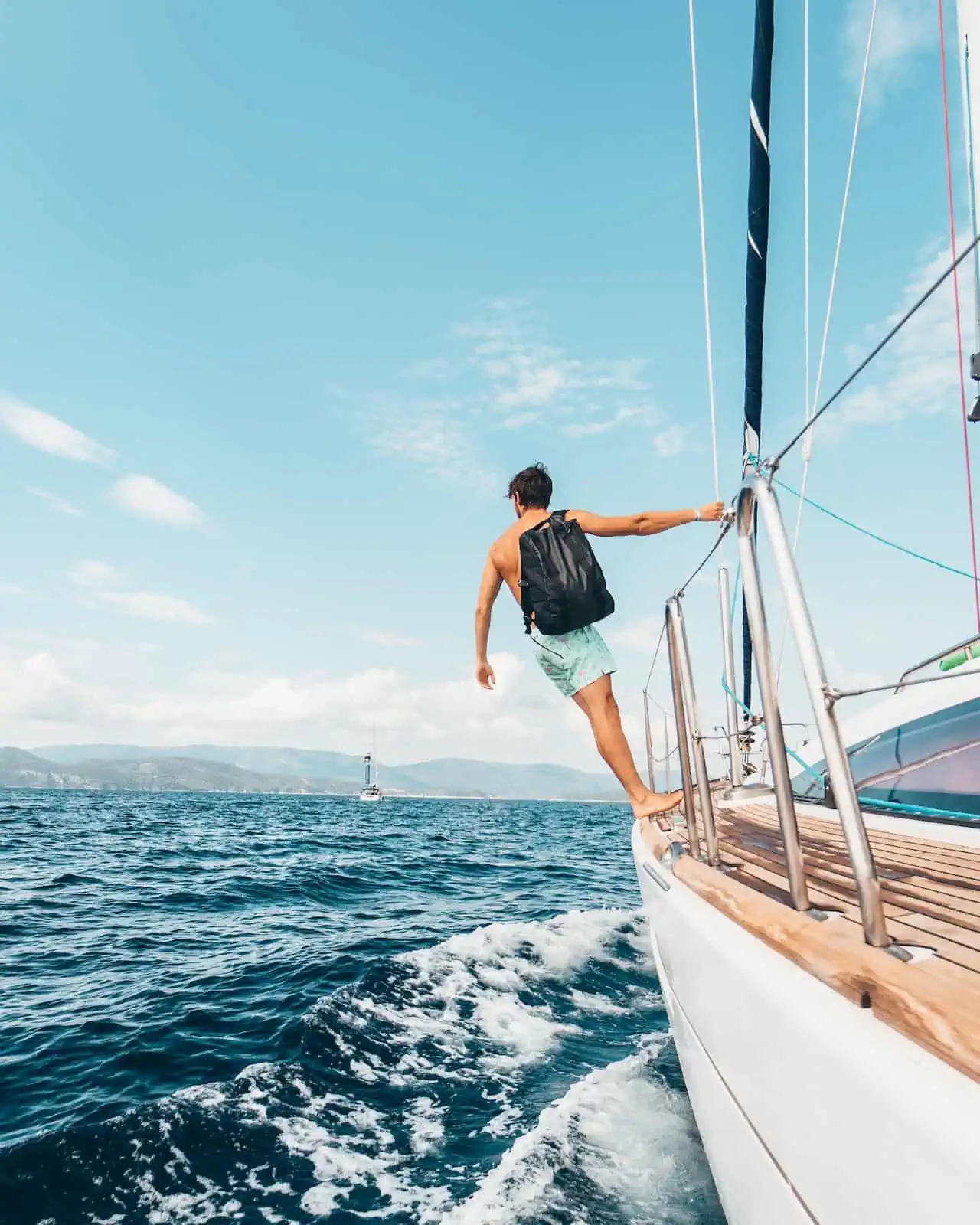
Wondering how long it would take to sail from the UK all the way to sunny Australia? Many adventurous sailors dream of undertaking the epic voyage across the vast oceans separating these two continents.
While taking a boat to sail from UK to Australia presents unique challenges, with proper planning and preparation it can be an unforgettable journey.
Let’s explore some key factors to consider for this long distance sail.
Average Sailing Time
Most experienced sailors planning a boat sail from UK to Australia estimate the total sailing time to be around 3-6 months depending on weather conditions and stops along the way.
The direct distance between the UK and Australia is approximately 18,000 km (11,000 miles). However, it is not advisable to sail non-stop for safety and logistical reasons.
Rather than rush, it is better to enjoy stops for provisions, repairs, sightseeing and waiting for good weather windows along the route. A typical itinerary would involve sailing from the UK to the Mediterranean, through the Suez Canal, across the Indian Ocean with stops in places like Sri Lanka and Indonesia, before finally reaching Australia.
With an average sailing speed of around 5-7 knots, allow ample time for the journey.
Do I need Sailing yacht insurance?
When undertaking an ambitious sailing adventure that spans multiple countries and bodies of water, having adequate Sailing yacht insurance is an absolute must. Good insurance will provide coverage against unforeseen expenses from various hazards like storms, groundings, machinery failure and medical emergencies that can seriously derail your voyage if not properly insured.
Carefully review policy details for options that offer global assistance and coverage for your entire planned route, from the UK all the way to Australia and beyond. Liability insurance is also important in case of any incidents with other vessels or property. Getting a quote well in advance from experienced marine insurers will help secure the right protection.
Preparation and Considerations
Properly preparing your boat, crew and provisions for the long-distance voyage is critical to its success. Ensure your yacht is in excellent seaworthy condition with robust equipment, backup systems, ample storage and a layout suitable for living aboard for months.
Stock up on supplies considering the remote locations along the route with limited resources.
Careful route planning using weather forecasts, tide calendars and navigational charts will help plot the most sensible course of action. It’s also smart to assemble an experienced international crew who can share watch duties.
Obtaining correct visas, permits, customs clearances and vaccinations is another important task. With diligent planning over many months, you’ll be fully set to embark on this ambitious sailing adventure.
Planning Sail from UK to Australia
The best time to consider sailing from UK to Australia is during the northern hemisphere’s summer months between May-November when weather conditions are generally more stable across oceans. Winter months bring greater risks of storms.
After reaching Australia, the east coast has a sub-tropical climate ideal for further cruising until the Austral winter sets in.
It’s wise to plan arrival in Australia for March-May to avoid cyclones along parts of the northern coastline. Factor in stops so teams can rest and for boat maintenance.
Popular places include the Mediterranean, Sri Lanka, Indonesia, and Northern Australia before the final push to Sydney or further south. With good planning, each sailing stint can be around 1-2 weeks for safety and to avoid fatigue.
What type of boat I need to sail from UK to Australia
The ideal boat to undertake this ambitious passage would be a sturdy monohull sailboat between 40-55 feet with systems and ample storage suitable for living aboard long term. A bluewater capable sailboat built for offshore passages can better handle waves and rough conditions compared to a narrow boat meant for protected coastal sailing.
Some good choices are modern cruising sailboats like the Outbound 44, Jeaneau 53 or Sayeo 52 known for seaworthiness. Catamarans offer more space but are less stable in heavy seas. Seek boats with strong build quality, self-steering, robust wind vane or autopilot, reliable machinery, large fuel and water tanks and modern safety/nav equipment. Proper preparation turns any bluewater vessel into your home on the oceans.
Best tips for sailing for long trips
For any sailing adventure spanning multiple ocean passages, safety should be the top priority. In addition to thorough preparations, some key best practices include maintaining regular radio schedules so your progress and position are tracked. Stow all loose gear securely and have multiple methods to produce power/freshwater. Make a photographic/video logbook of equipment status/repairs.
Staying healthy involves exercising onboard, storing plenty of nutrient-dense food and having a first-aid kit plus any required prescriptions. Rotating watch schedules help prevent fatigue. Keeping crew morale high through activities, music, games and watching for whales/ocean sunsets will make each day feel like an adventure. With patience and by following expert guidelines, your sailing trip from UK to Australia can be an amazing experience!






